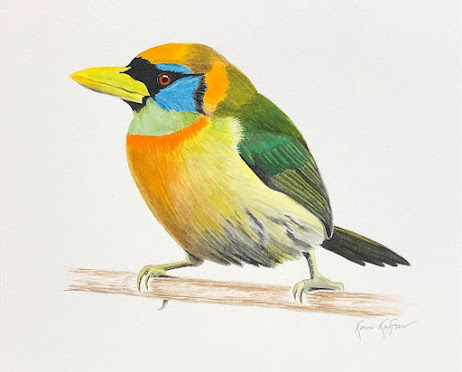Antarctica: Outline of the trip
The vast majority of expedition cruises to Antarctica go from South America to the Antarctic Peninsula, and the map shows why. South America extends much farther south than Africa or Australia, and the Antarctic Peninsula is the northernmost point of the white continent, so the crossing is feasible for many kinds of ships. There are also some expedition cruises that go south from New Zealand and take in the subantarctic islands of that country, and a few cruises that go south through the bird-rich waters of South Africa to the continent's edge, and we would like to try those routes eventually. But so far, all five of my trips have originated in South America.
Most world maps (like the one above) show Antarctica as an ill-defined mass along the lower edge, so it's hard for most people to get an idea of the continent's size. Antarctica is huge -- near the size of Australia and Europe combined. It is roughly centered on the South Pole, and the interior of the continent is the coldest region on earth. We confess that, as naturalists, we're not very interested in visiting the South Pole; nothing lives there except a few dedicated scientists. Remarkably, the South Polar Skua has occurred there as a stray, having flown many hundreds of miles across lifeless ice and rock, but we'd rather watch birds like this out at the Antarctic coastline where they belong.





Awesome trip... I am glad you defined it the way you did (with pictures) so that people like me can understand. I don't know why but when I think of Antartica, I just never link it with S. America. If fact, it is just hard to link it to being so close. I guess when we think cold we think north not south.
ReplyDeleteThanks, Chad. I've always been fascinated with geography and with the questions of which birds live where ... but for me to understand geography I have to see it, so I'm always poring over maps. Glad to hear that the visual representation here was useful.
ReplyDeleteSounds like you had a pretty awesome trip! Can't wait to hear the details!
ReplyDeleteHappy Birding! --Chris W, Madison, WI